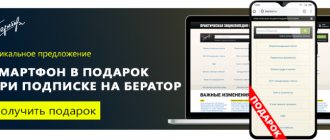Who is required to take f. 4 – cash flow statement
The Accounting Law allows for accounting in a simplified form (Clause 4, Article 6 of Federal Law No. 402-FZ dated December 6, 2011):
- SMEs;
- non-profit enterprises;
- participants of the Skolkovo project.
It is these entities that are not required to include a cash flow statement (hereinafter referred to as the cash flow statement) as part of the financial statements, but have the right to do so if they consider it necessary.
All other enterprises must generate this document annually and submit it to the Federal Tax Service as part of their accounting reports no later than three months after the end of the year: for 2021 - until 03/31/2021 inclusive.
What changes in the 4-f statistical report (costs)
The changes affected both the 4-f statistical reporting form (costs) and the procedure for filling it out. However, the amending resolution comes into force on October 29, 2018. This means that according to the updated form, the report will need to be submitted only starting with the annual report for 2018.
This is interesting: The chief accountant is appointed to the position
to the procedure for filling out Form 4-F (costs).
1. The procedure for filling out data on the costs of production and sales of products (lines 002, 021) has been specified for industrial enterprises that apply prices on ex-station-destination terms, when the cost of delivery is not formed individually for each contract and is not allocated separately in the contract.
2. It is clarified that raw materials, materials, components and fuel used for production needs are shown as imported (lines 005, 007) if there are documents confirming the country of origin.
3. The list of fuel costs shown on line 006 has been added. Now they include the cost of purchased fuel of all types, spent on transport work to service production, which is carried out by the organization’s transport.
4. The composition of rent for leased real estate, reflected in line 240, has been clarified. Now this payment is not only for buildings, structures, individual premises, land plots, but also for surface water bodies and everything that is firmly connected to the land. That is, for objects whose movement without disproportionate damage to their purpose is impossible, including forests, perennial plantings and other real estate objects.
5. It is specified that business travel expenses on line 062 are reflected only for the main type of economic activity of the organization.
6. The description of the service for collection, processing and disposal of waste, which is used when filling out section IV of the report (column 1 of line 151), has been adjusted.
The changes made to the 4-f statistical report form (costs) are minor. They apply only to organizations with the main activity of “Crop and livestock farming, hunting and the provision of services in these areas” and “Fishing and fish farming”.
Thus, lines 064 and 066 of Table 2 of Section II are excluded from the report. They deciphered the costs of purchasing purchased seeds, planting material and purchased feed.
Cash flow statement: form
The DDS report was introduced by Order of the Ministry of Finance dated July 2, 2010 No. 66n. Its current version dated April 19, 2019 applies to reporting based on the results of 2021.
The cash flow statement form is divided into 3 blocks:
| Operation block | What data does it include? |
| Current | Information about the current activities of the organization. It is such operations that generate profit or loss from sales. |
| Investment | Movement of funds associated with non-current assets, participation in other organizations and turnover of debt securities |
| Financial | Attracting credit and borrowed funds, settlements with participants on shares, shares and dividends |
The data is provided for 2 years: the reporting year and the one preceding it. Negative indicators (payments) are indicated in brackets.
In fact, the cash flow statement form 2020 complements the overall picture of the financial condition and stability of the company and gives users information about the real flow of money (without taking into account the movement of funds from the cash register to bank accounts and back).
In Russian practice, a DDS report is compiled using the direct method, i.e. every receipt and any payment is reflected in one of the lines.
In world practice, such forms are also compiled by an indirect method: from the profit (loss) received, the amount of changes in non-monetary items, such as depreciation, dynamics of the book value of fixed assets, the value of current assets, short-term and long-term liabilities, etc. is excluded.
Instructions for filling out form 4-TER
Instructions for preparing a 4-TER report for statistics are in Appendix No. 3 to Rosstat Order No. 461 dated July 27, 2018.
Form 4-TER includes a title page and three sections. We will tell you how to fill them out further.
Title page
The simplest element of any statistical form.
- Indicate the full name of the organization from the constituent documents and its short name in brackets.
- In the “Postal Address” line, indicate the legal address with a postal code, and if it does not coincide with the actual address, enter the actual location.
- In the code part, indicate the OKPO and identification number for the units.
Section 1. Remains, receipt, consumption of fuel and heat energy
The first section contains information on all fuel received and consumed by the organization in the reporting year, as well as on its balances. Fuel sold to the public, employees and other organizations is also reflected in this section.
Enterprises that consume fuel and energy and simultaneously produce them provide data only on the fuel produced, intended for their own needs and sales to the public/employees. Fuel sold to other legal entities is not included in the section.
In the first column, indicate the remaining fuel at the beginning of 2021, and in the second column - the amount of fuel received in the reporting year - purchased externally and produced independently.
In the third column of the first section, indicate all fuel/energy consumption at the enterprise, including losses and shortages. In the total volume of consumption, data on fuel consumption is highlighted:
- boiler and furnace fuel (column 4);
- motor fuel (column 5);
- raw materials (column 6);
- for non-fuel needs (column 7).
In column 8, indicate the volume of waste petroleum products sold to other legal entities and oil depots. If you are engaged in exporting fuel, reflect the data on it in column 9.
Enter the balance at the end of 2021 in column 10.
Keep records of exports and imports in the Kontur.Accounting web service. Simple accounting, payroll and reporting in one service.
Section 2. Actual consumption of fuel and energy resources
The second section contains data on fuel consumption in tons of standard fuel.
To convert fuel into conventional fuel, multiply the volume of fuel in physical terms by K - the actual thermal equivalent.
When filling out column A of this section, be guided by the list of types of products, works and services that consume fuel and energy. The list is presented in the appendix to form 4-TER.
In column 1, provide data on the heat and electricity supplied from the buses and collectors of power plants, except for losses and expenses for own needs. Energy received from someone and sold to consumers is not included in this column.
In column 2, indicate electricity costs for your own needs for electricity production and heat supply. Data on actual fuel consumption in power plants for the reporting year are given in conventional terms in columns 5–27.
Generating a cash flow report
The form is filled out according to the rules established by PBU 23/2011. Here are some of them:
- revenue and payments to suppliers and contractors are included in the appropriate lines without indirect taxes (VAT, excise taxes);
- indirect taxes are reflected in a collapsed manner (letter of the Ministry of Finance dated January 27, 2012 No. 07-02-18/01). For example, incoming VAT is subtracted from outgoing VAT: a positive difference is reflected in line 4119 “Other receipts”, a negative difference is reflected in line 4129 “Other payments”;
- the amount of remuneration of employees includes personal income tax and insurance contributions (line 4122);
- separate lines are allocated for income tax;
- for other taxes and fees, the subject has the right to add a line, for example, with code 4125 and the name “Other taxes and fees”. This will include all mandatory payments, except for indirect taxes, personal income tax, insurance premiums and income tax.
On April 26, business entities must submit reports to the state statistics bodies in form 4-f (costs) “Report on the costs of production (works, Report on the costs of production (works, On some measures of state support for small businesses”).
The report is not submitted:
– organizations that apply the simplified taxation system (STS) and keep records in the book of income and expenses of organizations and individual entrepreneurs that use the STS;
– peasant (farm) farms.
The report can be submitted electronically
Starting with the report for the first quarter of 2013, organizations can submit the report electronically, via the Internet or on paper.
A prerequisite for submitting a report in electronic form is that the organization has electronic digital signatures obtained upon registration as a subscriber of the certification center of the republican unitary enterprise “Information and Publishing Center for Taxes and Duties.”
Submission of the report in electronic form is carried out using specialized software, which is posted along with the necessary instructional materials for its deployment and use on the Internet on the official website of Belstat.
There have been changes to the report form
Form 4-f (costs) for 2013 and the Instructions have changed slightly compared to 2012:
1) at the proposal of the Ministry of Trade, the report included page 019 “expenses for online advertising”, which should reflect the costs of advertising placed by organizations on the Internet;
2) p. 070 “network gas” was excluded and an amendment was made to the Instructions, according to which an organization whose main economic activity is the production and distribution of electricity, gas, steam and hot water and which transports and distributes purchased gas through distribution networks among consumers, on lines 002 and 021 reflects the costs incurred during the reporting period, not including the purchase price of gas.
Not all sections need to be completed in the report for the first quarter.
Respondents fill out Section IV only in the annual report. At the same time, this section provides a breakdown of part of the material costs for the production of products (works, services) for the main type of economic activity of the organization by type of products and services corresponding to codes from 01000 to 41000 (sections A–E) of types of economic activity according to OKED. Costs for raw materials and supplies, purchased components, semi-finished products, fuel, electrical and thermal energy, individual work and production services performed by third parties (except for those indicated on lines 026 to 029 of Table 2, Section II) must be distributed according to the corresponding lines from 110 to 133 sections. IV.
Let us dwell on some of the questions that arise among respondents when filling out Form 4-F (costs).
1. In connection with the entry into force of the new edition of the Tax Code of the Republic of Belarus (hereinafter referred to as the Tax Code), from January 1, 2013, the VAT benefit for telecommunication services provided to individuals, provided for in subsection. 1.21 clause 1 art. 94 Tax Code as amended, which was applied in 2012.
Is it necessary to bring the corresponding period of the previous year into comparable conditions when filling out page 035 of form 4-f (costs)?
In form 4-f (costs) they reflect data on the costs of producing products (works, services) reflected in the production cost accounts and relating to the current activities of the organization in accordance with the legislation of the Republic of Belarus and accounting policies. Form 4-f (costs) is drawn up based on data from accounting registers.
If in the reporting period there was a reorganization, a change in the structure of the legal entity or the methodology for calculating indicators, then in the form 4-ph (costs) data for the previous period are given based on the new structure of the legal entity or the methodology adopted in the reporting period.
According to page 035 “Value added tax included in costs”, forms 4-f (costs) reflect the amount of VAT paid on the purchase of raw materials, materials, fuel, components, semi-finished products, other goods (works, services) used for production products (works, services), sales operations of which are exempt from VAT. The methodology for filling out this indicator has not changed.
In this case, the list of transactions exempt from VAT has changed in 2013 compared to 2012. At the same time, the accounting data regarding the payment of VAT in 2012 should not change and, accordingly, the data on page 035 gr. 2 forms 4-f (costs) for January - March 2013 should be equal to the data on page 035 gr. 1 form 4-f (costs) for January – March 2012
2. How can I round correctly in Form 4 (costs)?
Each indicator of form 4-f (costs) is filled out on the basis of accounting data and other primary accounting documents on the costs of producing products (works, services) in millions of rubles. In this case, the value of the indicator is first determined in accounting units, and then rounded into millions of rubles according to the rules of arithmetic. If the sum of the terms after rounding is greater (less) than the final indicator, then the term that has the smallest error when rounded is rounded down (up).
The example shows that for the line “raw materials” the accounting data cannot be rounded to the nearest million, so the column “For the reporting period since the beginning of the year” is not filled in in the report. According to the rules of arithmetic, the line “depreciation of fixed assets and intangible assets” should be rounded to 1 million rubles. However, to obtain the total amount of production costs, according to the rule of large numbers, the data in this line is rounded down (i.e., a dash is placed).
3. How should monthly payments to employees provided for by Decree of the President of the Republic of Belarus dated December 7, 2012 No. 9 “On additional measures for the development of the woodworking industry” (hereinafter referred to as Decree No. 9) be reflected in the form 4-f (costs)?
According to page 010, form 4-f (costs) reflect:
– payment of wages for work performed and time worked;
– incentive and compensatory payments;
– payment for unworked time;
– other payments established by the legislation of the Republic of Belarus (clause 16 of the Instructions).
Thus, the amounts of monthly payments provided for by Decree No. 9 must be included in pages 010 and 036 of the Form 4-f report (costs).
For reference: in open joint-stock companies “Borisovdrev”, “Vitebskdrev”, “Gomeldrev”, “Ivatsevichdrev”, “Mostovdrev”, “Rechitsadrev”, “FanDOK”, “Mogilevdrev” and at the republican production unitary enterprise “Mozyr Woodworking Plant” (hereinafter – basic organizations) conclude contracts with employees in the manner and on the terms provided for by Decree of the President of the Republic of Belarus dated July 26, 1999 No. 29. During the period of validity of the contract, employees of basic organizations, in addition to the wages established in accordance with the contract, are made a monthly payment in the amount determined by the employer, in deadlines established in base organizations for payment of wages.
These monthly payments are not included in wages. The amounts of monthly payments are attributed by base organizations to the cost of production, goods (work, services) and are included in the costs of production and sale of products, goods (work, services) taken into account for taxation (clause 2 of Decree No. 9).
4. Should interest on loans and borrowings accrued in 2013 be reported on Form 4 (expense)?
In form 4-f (costs) they reflect data on the costs of production of products (works, services) related to the current activities of the organization in accordance with the legislation of the Republic of Belarus and accounting policies reflected in the production cost accounts (clause 6 of the Instructions).
Interest on loans and borrowings, with the exception of those attributable to the cost of investment assets, as well as those listed in Art. 131 and 131-1 of the Tax Code are included as expenses when calculating income tax. In accounting, interest is recognized as an expense for financial activities (clause 15 of the Instructions for Accounting of Income and Expenses, approved by Resolution of the Ministry of Finance of the Republic of Belarus dated September 30, 2011 No. 102).
Interest accrued on loans and borrowings received is reflected in the debit of account 91 “Other income and expenses” and other accounts and the credit of accounts 66 “Settlements for short-term loans and borrowings”, 67 “Settlements for long-term loans and borrowings” (paragraphs 51, 52 of the Instructions on the procedure for applying the standard chart of accounts for accounting, approved by Resolution of the Ministry of Finance of the Republic of Belarus dated June 29, 2011 No. 50).
Therefore, accrued interest on loans and borrowings should not be reflected in 2013 on Form 4-F (expense).
5. Should the cost of equipment installed by a construction organization during construction and installation work be reflected in form 4-f (costs)?
On page 001 they reflect the cost of all products produced, work performed, services rendered in selling prices minus taxes and fees calculated from revenue (clause 9 of the Instructions).
When forming the cost of a construction project and reflecting construction costs in accounting, business entities are guided by the Instruction on the procedure for determining the cost of a construction project in accounting, approved by Resolution of the Ministry of Construction and Architecture of the Republic of Belarus dated May 14, 2007 No. 10 (as amended and supplemented; hereinafter referred to as Instruction No. 10).
The basis for reflecting the cost of equipment included in construction costs in accounting is the acceptance certificates of completed work, drawn up in the manner prescribed by law. The name and cost of the mounted (installed) equipment are indicated in the acceptance certificate for the work performed, following the total cost of the work performed (for reference). The cost of equipment is not included in the scope of contract work (clause 27 of Instruction No. 10).
Thus, in form 4-f (costs) they reflect the cost of construction and installation work, including the cost of equipment installation work, if the installation was carried out by a contractor, and the cost of work performed without the cost of equipment installed by the contractor.
6. The organization carries out various types of activities, in particular the production of concrete products (in accounting records reflected in account 43 “Finished products”), which are subsequently sold externally or used as materials in construction and installation work (the main activity).
How should the cost of finished products of own production, used as materials in carrying out other activities, be reflected in the form 4-f (costs)?
In form 4-f (costs) they reflect data on the costs of production of products (works, services) related to the current activities of the organization in accordance with the legislation of the Republic of Belarus and accounting policies, reflected in the production cost accounts.
Line 001 reflects the cost of all products produced, work performed, services rendered in selling prices minus taxes and fees calculated from revenue (clause 9 of the Instructions).
Line 002 reflects the organization's costs for products manufactured, work performed, services rendered, reflected on line 001 (clause 10 of the Instructions).
In this case, costs for the specified volumes must be reflected in the debit of accounting accounts 43 “Finished products”, 45 “Goods shipped” and (or) 90 “Revenues and expenses for current activities” in correspondence with the credit of cost accounting accounts (for example, D- t 43 – Kt 20).
If the organization meets these conditions, then when filling out Form 4-f (costs), this type of produced product (work) is taken into account.
Thus, the cost of concrete products produced by the organization should be reflected on line 001 in the sum of all produced products, goods (works, services), and the costs of their production - on line 002 of the form in the total cost of all produced products, goods ( works, services).
In accordance with paragraph 11 of the Instructions on page 003 (022), the cost of purchased from other organizations is reflected:
– raw materials and (or) supplies; – components undergoing installation and (or) semi-finished products undergoing additional processing; – fuels and energy of all types; - natural resources; – works and services of a production nature performed by other organizations or individual entrepreneurs; – losses from shortages and (or) damage to inventory within the limits of natural loss norms.
Consequently, the cost of self-produced concrete products used as materials during construction and installation work (the main activity) should not be reflected in section. II on pages 020 and 021 of form 4-f (costs).
Cash Flow Statement: Example
As an example, consider Finist LLC, which is engaged in the wholesale trade of cars.
Here are the main indicators that served as data sources for filling out the lines of the DDS report for 2021:
| Index | Amount, thousand rubles | Line, amount thousand rubles. | Reflected amount, thousand rubles. |
| Current Operations | |||
| Revenue from the sale of cars, incl. VAT 20% | 150 000 | 4111 | 125 000 |
| Receiving funds from renting out property, incl. VAT 20% | 600 | 4112 | 500 |
| Payment to suppliers, incl. VAT 20% | 90 000 | 4121 | 75 000 |
| VAT (shown collapsed) | Outgoing: (150,000 + 600) x 20 / 120 = 25,100; Incoming: 90,000 x 20 / 120 = 15,000 | 4119 | 10 100, because outgoing VAT is greater than incoming VAT: 25,100 – 15,000 = 10,100 |
| Salary | 18 200 | 4122 | 18 200 |
| Income tax | 6 800 | 4124 | 6 800 |
| Other taxes (property tax) | 250 | 4125 (added by Finist LLC independently) | 250 |
| Receipt total | X | 4110 | 135 600 (125 000 + 500 + 10 100) |
| Payment summary | X | 4120 | 100 250 (75 000 + 18 200 + 6 800 + 250) |
| Balance by block of transactions | X | 4100 | 35 350 (135 600 – 100 250) |
| Investment operations | |||
| The loan issued in 2021 was returned to the company | 5 000 | 4213 | 5 000 |
| Dividends received from participation in other organizations | 1 200 | 4214 | 1 200 |
| A new building was purchased, payment includes VAT 20% | 12 000 | 4221 | 10 000 |
| Shares of a third-party organization were purchased | 2 000 | 4222 | 2 000 |
| VAT on the purchased building is reflected | 2 000 | 4229 | 2 000 |
| Receipt total | X | 4210 | 6 200 (5 000 + 1 200) |
| Payment summary | X | 4220 | 14 000 (12 000 + 2 000) |
| Balance by block of transactions | X | 4200 | (7 800) (6 200 – 14 000) |
| Financial operations | |||
| A contribution to the authorized capital of a new participant was received | 200 | 4312 | 200 |
| Dividends paid to founders | 13 000 | 4322 | 13 000 |
| Receipt total | X | 4310 | 200 |
| Payment summary | X | 4320 | 13 000 |
| Balance by block of transactions | X | 4300 | (12 800) (200 – 13 000) |
In the example under consideration of filling out a cash flow statement for 2021, Finist LLC looks like a completely successful enterprise: a positive result from current activities allows the company to purchase a new building and pay off the owners, i.e. cover the negative balance on investment and financial transactions.
The DDS report ends with the lines:
- 4400 – total balance for the year: 35,350 – 7,800 – 12,800 = 14,750;
- 4450 – balance of cash and cash equivalents at the beginning of the year: 9,870;
- 4500 – balance of cash and cash equivalents at the end of the year: 9,870 + 14,750 = 24,620.
As of December 31, 2020, at the cash desk and in the accounts of Finist LLC - 24,620 thousand rubles.
Who should submit Form 4-OS
Who rents out - legal entities, individuals engaged in business activities without forming a legal entity (individual entrepreneurs), carrying out environmental protection activities (having fixed assets for environmental protection purposes, carrying out environmental protection measures (independently or in the form of consumption of third-party environmental services), having facilities, having a negative impact on the environment).
In this case, one of the conditions must be met:
- the presence of current costs for environmental protection and (or) payment for environmental services of more than 100.0 thousand rubles. per year, subject to the implementation of environmental measures and the presence of facilities that have a negative impact on the environment;
- the presence of current costs for the protection of environmental protection or payment for services of environmental significance for a separate division of a legal entity of less than 100.0 thousand rubles. provided that in total for all separate divisions located in one constituent entity of the Russian Federation, these costs amounted to more than 100.0 thousand rubles.
“Separate division” is a territorially separate division of an organization, at the location of which stationary workplaces are equipped. A stationary workplace is a place created for a period of more than 1 month.
Parts of an enterprise located at different postal addresses at a short distance from each other (for example, within the boundaries of one municipal district or urban district) may be reflected as one separate division if their activities are technologically closely related to each other (for example, separate sections of one and same production). Parts of the enterprise located on the territory of different municipal districts and urban districts are considered different separate divisions.
If less than 100.0 thousand rubles were spent on environmental protection measures for all separate divisions in one subject of the Russian Federation, or nothing was spent, then the 4-OS report “Information on current costs of environmental protection” does not need to be submitted!
If a legal entity has separate divisions, this form is filled out both for each separate division and for a legal entity without these separate divisions.
The report is also provided by branches, representative offices and divisions of foreign organizations operating on the territory of the Russian Federation in the manner established for legal entities.








